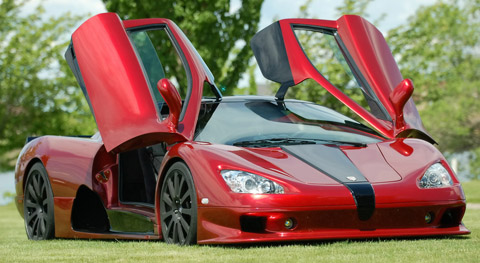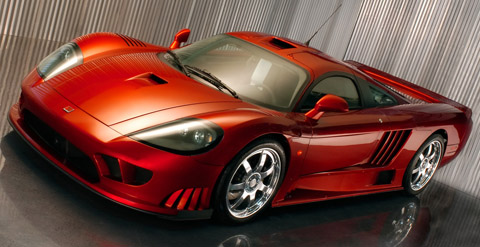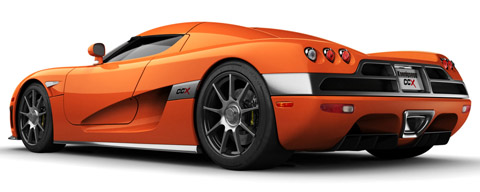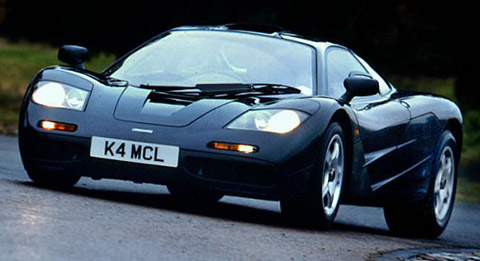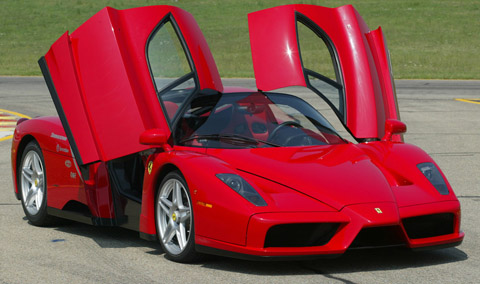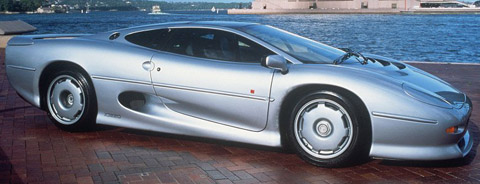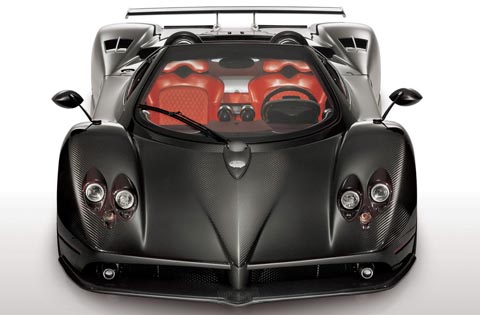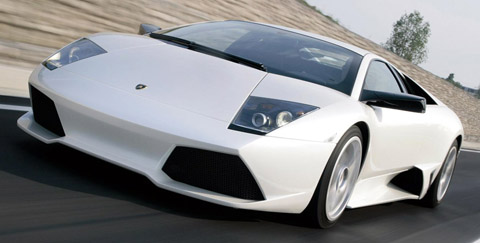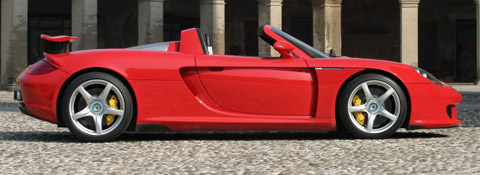2011
New Year is celebrated with lots of excitement. From a few months before, people start dancing on the flow of New Year. It's a fresh beginning of life. Deleting darkness, evil thoughts, people want to purify their mind. New year 2011 will share outstanding moments with you and your near ones. With new resolution, you will move towards the journey of life. Everybody wants to do some special on the eve of New Year. In the year 2011, you can enjoy fabulous moments. You should start setting numerous exciting schedules together with your friends.
This post confirms my ownership of the site and that this site adheres to Google AdSense program policies and Terms and Conditions

Custom Search
Google Ads
Friday, December 31, 2010
Wednesday, December 22, 2010
BRAKING SYSTEM OF CARS
We all know that pushing down on the brake pedal slows a car to a stop. But how does this happen? How does your car transmit the force from your leg to its wheels? How does it multiply the force so that it is enough to stop something as big as a car?
When you depress your brake pedal, your car transmits the force from your foot to its brakes through a fluid. Since the actual brakes require a much greater force than you could apply with your leg, your car must also multiply the force of your foot. It does this in two ways:
Mechanical advantage(leverage)
Hydraulic force multiplication
The brakes transmit the force to the tires using friction, and the tires transmit that force to the road using friction also
When you depress your brake pedal, your car transmits the force from your foot to its brakes through a fluid. Since the actual brakes require a much greater force than you could apply with your leg, your car must also multiply the force of your foot. It does this in two ways:
Mechanical advantage(leverage)
Hydraulic force multiplication
The brakes transmit the force to the tires using friction, and the tires transmit that force to the road using friction also
PAINTING TECHNIQUES OF BMW CARS
Painting Of BMW Cars
Automotive coatings manufacturer PPG Industries announced today its next generation B1:B2 waterborne paint technology is now in use for the first time in the United States. The ‘wet-on-wet’ process technology is currently in use at the BMW assembly plant in Spartanburg, Southern California.
"We are proud to have launched this exciting process as a first in the United States," said Bob White, director, global accounts at BMW. "Our waterborne B1:B2 technology highlights our dedication to helping our customers reduce the overall paint shop footprint and environmental impact, while achieving superior appearance and maintaining color flexibility."
First off, to properly understand the innovative side of this new process, let’s take a glimpse on how a traditional automotive paint process looks like: the application of pretreatment and electrocoat is followed by a primer layer; after the primer layer is cured, a topcoat layer of basecoat and clearcoat is applied and cured. This makes the classic process both costly and time-consuming.
In opposition with the traditional process, the next generation B1:B2 technology allows the customer to reduce the number of steps necessary to paint a vehicle. According to PPG, this is accomplished by moving the traditional primer application into the topcoat booth.
Both the B1 and B2 layers are applied wet-on-wet and do not require a baking or a heated dehydration process in between, which results in reducing the overall energy usage and paint shop footprint.
“Compact paint processes like the B1:B2 process from PPG generate substantial savings in capital and operating costs for OEMs by reducing the manufacturing footprint of a paint shop, lowering energy consumption and increasing overall process efficiency,”
Automotive coatings manufacturer PPG Industries announced today its next generation B1:B2 waterborne paint technology is now in use for the first time in the United States. The ‘wet-on-wet’ process technology is currently in use at the BMW assembly plant in Spartanburg, Southern California.
"We are proud to have launched this exciting process as a first in the United States," said Bob White, director, global accounts at BMW. "Our waterborne B1:B2 technology highlights our dedication to helping our customers reduce the overall paint shop footprint and environmental impact, while achieving superior appearance and maintaining color flexibility."
First off, to properly understand the innovative side of this new process, let’s take a glimpse on how a traditional automotive paint process looks like: the application of pretreatment and electrocoat is followed by a primer layer; after the primer layer is cured, a topcoat layer of basecoat and clearcoat is applied and cured. This makes the classic process both costly and time-consuming.
In opposition with the traditional process, the next generation B1:B2 technology allows the customer to reduce the number of steps necessary to paint a vehicle. According to PPG, this is accomplished by moving the traditional primer application into the topcoat booth.
Both the B1 and B2 layers are applied wet-on-wet and do not require a baking or a heated dehydration process in between, which results in reducing the overall energy usage and paint shop footprint.
“Compact paint processes like the B1:B2 process from PPG generate substantial savings in capital and operating costs for OEMs by reducing the manufacturing footprint of a paint shop, lowering energy consumption and increasing overall process efficiency,”
CAR BATTERY BOOSTERS
The car battery booster is a device used to start your automobile when your ignition systems appear to have failed. This can happen for a number of reasons such as the temperature or the connectivity of the components under the hood.
Car battery boosters come in two power settings, which are 6 volt and 12 volt. The one you need will be written on the battery or you can contact your manufacturer in order to find out. Another name for this device is an automobile jump starter box, therefore when you go to buy this product do not let this issue confuse you.
To buy a car battery booster you are best of contacting your manufacturer to find out which one you specifically need and then get them from a place like amazon or eBay because it will be much cheaper here. Auto zone and Ford are other alternatives that I have tried and can say that got some very good deals. In my experience you will not have to buy more than $50 for one, but as a precaution you should buy two and keep one in the boot of your car as these batteries are prone to failure when you least expect it.
My experience with car batteries and motorbike batteries is that they last for about four months unless you are running some very electricity demanding hardware inside your automobile. However if you have a charger nearby then you should never have to run out of energy for your very special car.
DIFFERENT CAR ENGINES
Engine System
Diesel Engine
In 1878, Rudolf Diesel was attending the Polytechnic High School of Germany (the equivalent of an engineering college) when he learned about the low efficiency of gasoline and steam engines. This disturbing information inspired him to create an engine with a higher efficiency, and he devoted much of his time to developing a "Combustion Power Engine." By 1892 Diesel had obtained a patentfor what we now call the diesel engine
HEMI Engine
The HEMI engine for automobiles was born in 1948 -- Harry Westlake and several others developed a Hemi 6-cylinder engine for Jaguar. A few years later, in 1951, Chrysler introduced a 180-horsepower HEMI V-8 engine on several models. The Chrysler HEMI engine had a displacement of 331 cubic inches (5.4 liters), so it is known as the "331 HEMI."
These days, 180 horsepower sounds like nothing. But in 1951, 180 horsepower was unheard of. It was an amazing amount of power for the day, and it fueled the "HEMI legend."
Rotary Engine
Diesel Engine
In 1878, Rudolf Diesel was attending the Polytechnic High School of Germany (the equivalent of an engineering college) when he learned about the low efficiency of gasoline and steam engines. This disturbing information inspired him to create an engine with a higher efficiency, and he devoted much of his time to developing a "Combustion Power Engine." By 1892 Diesel had obtained a patentfor what we now call the diesel engine
HEMI Engine
The HEMI engine for automobiles was born in 1948 -- Harry Westlake and several others developed a Hemi 6-cylinder engine for Jaguar. A few years later, in 1951, Chrysler introduced a 180-horsepower HEMI V-8 engine on several models. The Chrysler HEMI engine had a displacement of 331 cubic inches (5.4 liters), so it is known as the "331 HEMI."
These days, 180 horsepower sounds like nothing. But in 1951, 180 horsepower was unheard of. It was an amazing amount of power for the day, and it fueled the "HEMI legend."
Rotary Engine
A rotary engine is an internal combustion engine, like the engine in your car, but it works in a completely different way than the conventional piston engine.
The rotary engine (originally conceived and developed by Dr. Felix Wankel) is sometimes called a Wankel engine, or Wankel rotary engiIn a piston engine, the same volume of space (the cylinder) alternately does four different jobs -- intake, compression, combustion and exhaust. A rotary engine does these sam e four jobs, but each one happens in its own part of the housing. It's kind of like having a dedicated cylinder for each of the four jobs, with the piston moving continually from one to the next.
The rotary engine (originally conceived and developed by Dr. Felix Wankel) is sometimes called a Wankel engine, or Wankel rotary engiIn a piston engine, the same volume of space (the cylinder) alternately does four different jobs -- intake, compression, combustion and exhaust. A rotary engine does these sam e four jobs, but each one happens in its own part of the housing. It's kind of like having a dedicated cylinder for each of the four jobs, with the piston moving continually from one to the next.
Radial Engine
If you have ever seen a World War II bomber like the B-25 or the B-17, or if you have ever seen or been on an old commercial airplane like a DC-3, then you are familiar with something called a radial engine. Many planes of the WWII era used very large, very powerful radial engines to drive their propellers.
In this article, you will learn how the radial engine works, what makes it different from other engine configurations and why it fits in so well with airplanes.
In this article, you will learn how the radial engine works, what makes it different from other engine configurations and why it fits in so well with airplanes.
Tuesday, December 21, 2010
TOP TEN CARS
World's Fastest Cars
While most of us can only dream of owning the fastest car in the world, some will do whatever it takes to possess such speed and power. So, how fast are the fastest cars in the world? Here are the 10 fastest cars available on the market measures by top speed.
1. Bugatti Veyron: 267 mph, 0-60 in 2.5 secs. Aluminum, Narrow Angle 8 Liter W16 Engine with 1200 hp, base price is $1,700,000. Tested again on July 10, 2010 with the new 2010 Super Sport Version, the Bugatti Veyron once again claimed its title as the fastest car in the world at 267 mph.
2. SSC Ultimate Aero: 257 mph, 0-60 in 2.7 secs. Twin-Turbo V8 Engine with 1183 hp, base price is $654,400. Tested in March 2007 by Guinness World Records, The SSC Ultimate Aero was the fastest car in the world from March 2007 to July 2010 until recently it fell behind the Bugatti Veyron to take the #2 spot.
3. Saleen S7 Twin-Turbo: 248 mph, 0-60 in 3.2 secs. Twin Turbo All Aluminum V8 Engine with 750 hp, base price is $555,000. Smooth and bad-ass, will make you want to show it off non-stop.
4. Koenigsegg CCX: 245 mph, 0-60 in 3.2 secs. 90 Degree V8 Engine 806 hp, base price is $545,568. Made in Sweden, it is aiming hard to be the fastest car in the world, but it has a long way to go to surpass the Bugatti and the Ultimate Aero.
5. McLaren F1: 240 mph, 0-60 in 3.2 secs. BMW S70/2 60 Degree V12 Engine with 627 hp, base price is $970,000. Check out the doors, they looks like bat wings, maybe Batman need to order one and paints it black
6. Ferrari Enzo: 217 mph, 0-60 in 3.4 secs. F140 Aluminum V12 Engine with 660 hp, base price is $670,000. Only 399 ever produced, the price goes up every time someone crashes.
7. Jaguar XJ220: 217 mph, 0-60 in 3.8 secs. Twin Turbo V6 Engine with 542 hp, base price was $650,000. Made in 1992, this car still got what it takes to make the list.
8. Pagani Zonda F: 215 mph, 0-60 in 3.5 secs. Mercedes Benz M180 V12 Engine with 650 hp, base price is $667,321. With a V12 motor, this baby can do much better.
9. Lamborghini Murcielago LP640: 211 mph, 0-60 in 3.3 secs. V12 Engine with 640 hp, base price is $430,000. Nice piece of art, the design is very round and smooth.
10. Porsche Carrera GT: 205 mph, 0-60 in 3.9 secs. Aluminum, 68 Degree, Water Cooled V10 Engine with 612 hp, base price is $440,000. The most powerful and most expensive Porsche nearly made the list as #10.
TATA NANO
The Tata Nano is a low-cost, rear-engined, four-passenger city car built by the Indian company Tata Motors and is aimed primarily at the Indian domestic market.
Tata Motors began selling its "one-lakh car" in March, 2009. The cheapest car in the world today, though the price continues to risedue to increasing material costs, it is an exemplary example of Gandhian engineering, a concept involving deep frugality and a willingness to challenge conventional wisdom.
In 2008 the Financial Times reported: "if ever there were a symbol of India’s ambitions to become a modern nation, it would surely be the Nano, the tiny car with the even tinier price-tag. A triumph of homegrown engineering, the $2,200 (€1,490, £1,186) Nano encapsulates the dream of millions of Indians groping for a shot at urban prosperity." "Homegrown engineering" is a relative term here as much of the systems and parts used in the Nano may not have been developed or produced in India.
While the cars has sold over 200K units, disappointing November, 2010, sales figures have made some rethink current opinion that selling no frills products to the poor will be a winning strategy in the future.
The nickname, "one-lakh car" is due to the Nano's low price point, near 100,000 (one lakh rupees).
Tata Motors began selling its "one-lakh car" in March, 2009. The cheapest car in the world today, though the price continues to risedue to increasing material costs, it is an exemplary example of Gandhian engineering, a concept involving deep frugality and a willingness to challenge conventional wisdom.
In 2008 the Financial Times reported: "if ever there were a symbol of India’s ambitions to become a modern nation, it would surely be the Nano, the tiny car with the even tinier price-tag. A triumph of homegrown engineering, the $2,200 (€1,490, £1,186) Nano encapsulates the dream of millions of Indians groping for a shot at urban prosperity." "Homegrown engineering" is a relative term here as much of the systems and parts used in the Nano may not have been developed or produced in India.
While the cars has sold over 200K units, disappointing November, 2010, sales figures have made some rethink current opinion that selling no frills products to the poor will be a winning strategy in the future.
The nickname, "one-lakh car" is due to the Nano's low price point, near 100,000 (one lakh rupees).
Seeing an opportunity in the great number of Indian families with two-wheeled rather than four-wheeled vehicles, Tata Motors began development of an affordable car in 2003.The purchase price of this no frills auto was brought down by dispensing with most nonessential features, reducing the amount of steel used in its construction, and relying on low-cost Indian labor.
The introduction of the Nano received much media attention due to its low price.
The Nano's development was foreshadowed by the 2005 success of the affordable, 4-wheeled Tata Ace truckAnnouncing the vehicle as the least expensive production car in the world, Tata aimed for a starting price of one lakh, or 100,000, rupees. This was approximately US$2000 at the time. As of December, 2010, the cheapest Nano costs around US$2900.
Rapidly rising material prices(up 13% to 23% over the car’s development time) caused the car to be priced somewhat higher than 1 lakh (US$ 2,270).
In late October 2010, Reuters reported that prices of the car will be raised by an average of 9,000 rupees (US$202) from November because of rising material costs
The introduction of the Nano received much media attention due to its low price.
The Nano's development was foreshadowed by the 2005 success of the affordable, 4-wheeled Tata Ace truckAnnouncing the vehicle as the least expensive production car in the world, Tata aimed for a starting price of one lakh, or 100,000, rupees. This was approximately US$2000 at the time. As of December, 2010, the cheapest Nano costs around US$2900.
Rapidly rising material prices(up 13% to 23% over the car’s development time) caused the car to be priced somewhat higher than 1 lakh (US$ 2,270).
In late October 2010, Reuters reported that prices of the car will be raised by an average of 9,000 rupees (US$202) from November because of rising material costs
LAMBORGHINI
Ferruccio Lamborghini
Ferruccio Lamborghini was born in Italy in 1916. He was fascinated with engines from an early age. During World War II he joined the army and was stationed on the island of Rhodes. Fortunately there was little going on there during the war. The island was essentially isolated from the rest of the world
|
Subscribe to:
Comments (Atom)











